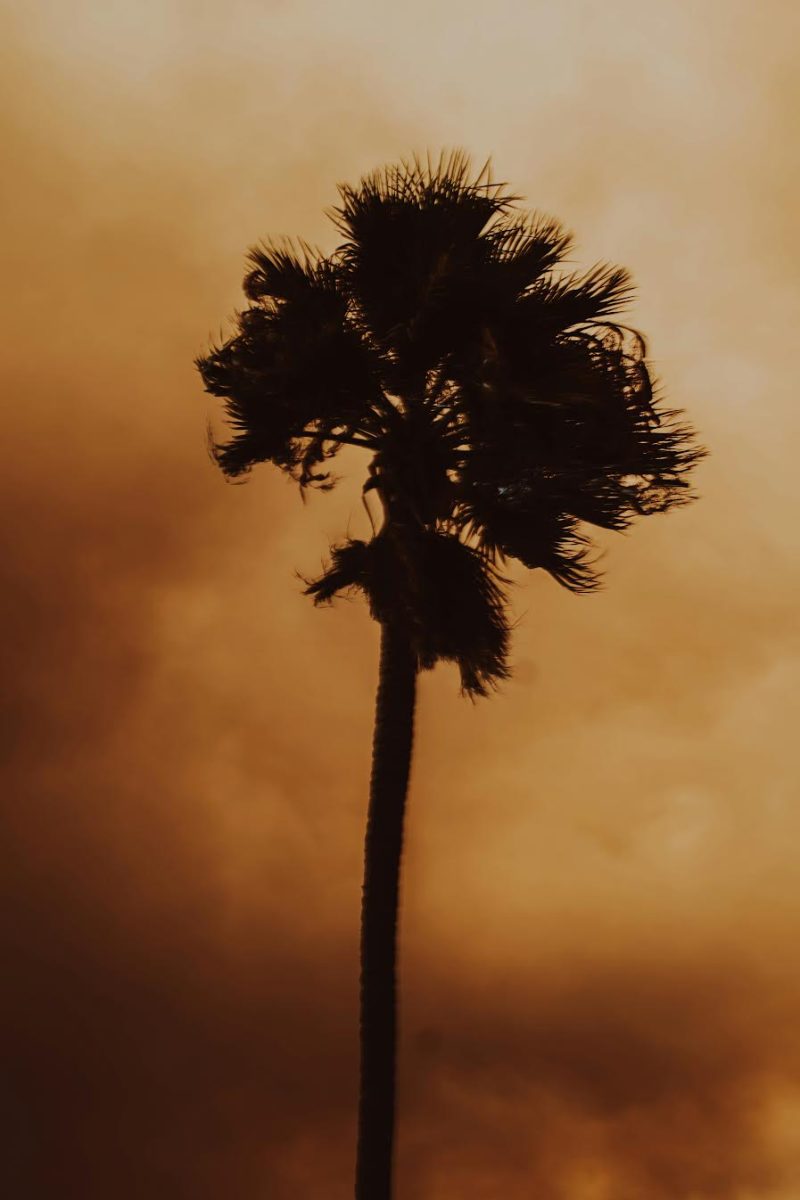Starting on the morning of January 7th, the Pacific Palisades neighborhood in Los Angeles, California, was engulfed in flames. It rapidly became one of California’s most destructive wildfires, destroying 6,837 homes and burning 23,448 acres (NBC and The Sacramento Bee). The fire raises questions surrounding the history of California’s wildfires, and potential connections that could help prevent future disasters.
The State of California is synonymous with wildfires; between 2017 and 2021, there have been an average of 8,607 fires per year in California alone. At their core, wildfires are a natural event that have many benefits for the environment. According to a NatGeo article, “Small, low-intensity fires help rejuvenate forests and are overall beneficial for conservation. Controlled use of wildland fires for positive environmental effects is common around the world,” with many regions implementing prescribed burns to reduce excess vegetation and promote biodiversity. That said, over 90% of wildfires in California have been a result of human activity, leading to unnatural, uncontrolled, and heavily destructive fires. These human-caused fires disrupt natural fire cycles, overwhelming ecosystems that are not adapted to such frequent or severe burns. According to UC Irvine’s Special Reports, “human-ignited fires grow more rapidly and release more energy as they’re growing because they’re often sparked under conditions that are hotter and dryer.” The crucial difference in conditions represents the line between beneficial renewal and catastrophic destruction.
California’s history of wildfires dates back centuries; indigenous communities practiced controlled burns to clear areas for crops and travel, while simultaneously preventing larger wildfires and promoting ecological diversity. As European settlers arrived west in the 18th and 19th centuries, policy shifted against controlled burning. History.com reports that in 1793, a Spanish bureaucrat outlawed ‘Indian burning’ because it was “viewed as a threat to the Spanish cattle herds and pastures.” These changes led to an unnatural buildup of dry vegetation, fueling larger and more intense fires. Transitioning into the 20th century, wildfires grew in frequency due to both the drier lands and sparks thrown from the new transcontinental railroad.
The 1932 Matilija Fire in Southern California was one of the larger wildfires that influenced the creation of the U.S. Forest Service’s aggressive fire suppression policies, which continued for decades. According to the Forest History Society, the wildfires “pushed forest fire issues into the public discourse,” drawing more attention to the issue. The Matilija Fire was one of the 45 mega-fires in California between 1900 and 1999. Megafires are defined as wildfires that burn 100,000 acres or more and have severe ecological and economical impacts.
Since 2000, California has already experienced 35 mega-fires, with the five largest wildfires in state history occurring since 2018. The 2020 August Complex Fire became California’s first “gigafire,” one that covers more than one million acres. The fire still remains the largest wildfire in California history. The following year, the Dixie Fire tore through counties in Northern California, burning close to one million acres. For reference, the current Palisades Fire has covered just over 20,000 acres.
As fires have grown, so have efforts to combat them and prevent them. NASA reports that advances in firefighting technology, including satellite monitoring, improved predictive modeling, and aerial fighting techniques, have helped responders react more efficiently. Additionally, the Indigenous practice of controlled and prescribed burns is now widely recognized as an effective tool for reducing wildfires.
Some of the most devastating wildfires in California’s history include the 2018 Camp Fire, which destroyed the town of Paradise and killed 85 residents in the process, making it the deadliest wildfire in California’s history. The year prior, in 2017, the Thomas Fire burned over 280,000 acres, temporarily becoming the largest in California’s history before being surpassed in the years following, ultimately giving its spot up to the 2020 August Complex Fire.
In response to the escalating wildfire crisis, both state and federal policies have evolved. Federal agencies like the U.S. Forest Service have shifted towards proactive fire management. Additionally, in January 2024, the Biden administration announced two FEMA grant programs with $1.35 billion available to increase climate resilience nationwide. This investment supports projects that reduce wildfire risks, such as forest management and community preparedness initiatives.
As wildfires continue to threaten communities and ecosystems in California and beyond, the focus must shift from preventing their spread into more populated areas. While fire is a natural process, the increasing frequency and intensity of wildfires, largely due to human activity, have made urban destruction a growing concern. Policy shifts such as strengthening fire-resistant infrastructure and continuing controlled burning near populated areas are crucial to building long-term resilience and learning from California’s extensive history of wildfires.








